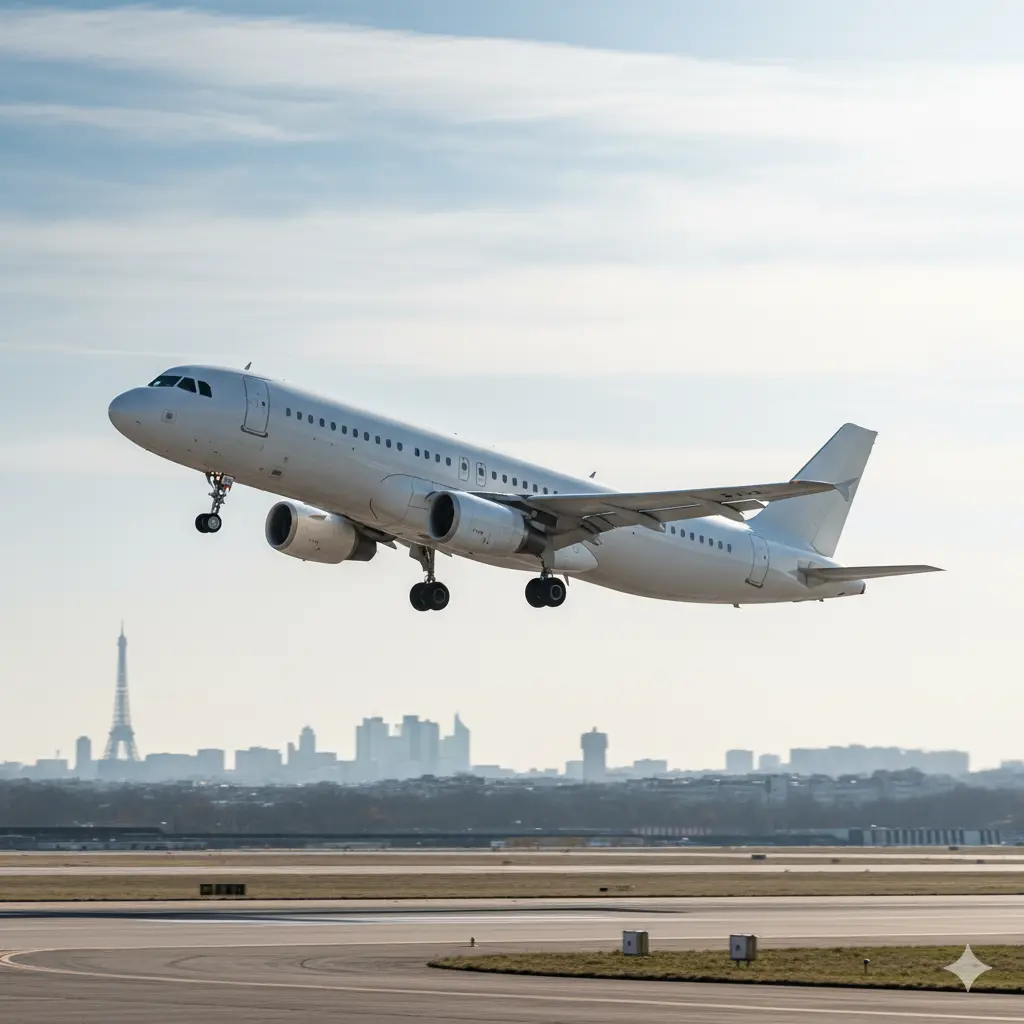The Airbus A320 family is one of the most important aircraft series in commercial aviation history. Since its first flight in 1987, the A320 has reshaped the airline industry by offering unmatched efficiency, comfort, and reliability. Today, with more than 10,000 aircraft delivered, the A320 has become the backbone of both low-cost carriers (LCCs) and major legacy airlines.
But while passengers often focus on comfort, technology, or flight range, what truly matters to airlines is cost efficiency. In today’s competitive aviation market, where profit margins average just 3–5%, controlling direct operating costs (DOCs) is the difference between profit and loss.

This comprehensive guide will break down everything airlines, investors, and aviation professionals need to know about the operating costs of the A320ceo vs A320neo, including:
-
Fuel burn per hour and per seat
-
Maintenance and engine cost differences
-
Crew, airport, and navigation costs
-
Lease and acquisition price comparisons
-
Cost per available seat-kilometer (CASK)
-
A320 vs Boeing 737 MAX operating economics
-
Case studies from leading low-cost carriers
👉 For more insights into airline economics and fleet performance, visit Aeroptimum – Aviation Performance Insights.
Why Focus on A320 Operating Costs?
Airlines live and die by their cost structure. With fierce competition, fluctuating fuel prices, and passenger demand pressure, every cent matters.
The A320’s success lies not only in its technological innovations like fly-by-wire controls or high utilization but also in its ability to keep costs per passenger low.
The key operating cost factors that define profitability include:
-
Fuel burn (kg/hour & liters per 100 km)
-
Maintenance reserves (airframe + engine)
-
Crew salaries, training, and benefits
-
Airport & navigation fees
-
Aircraft financing (lease vs purchase models)
By comparing the A320ceo (Current Engine Option) and A320neo (New Engine Option), airlines can determine which variant delivers lower lifecycle costs and better return on investment (ROI).
A320 Fuel Burn and Fuel Costs
🔹 A320ceo Fuel Consumption
-
Average fuel burn: ~2,500–2,600 kg/hour
-
Fuel per seat (150-seat layout): ~17–18 kg/hour
-
On a 2-hour flight: ~5,000 kg total
🔹 A320neo Fuel Consumption
-
Average fuel burn: ~2,200–2,300 kg/hour
-
Fuel per seat (180-seat layout): ~12–13 kg/hour
-
On a 2-hour flight: ~4,400 kg total
👉 The A320neo delivers 15–20% lower fuel burn, saving airlines $1–2 million per aircraft per year, depending on global fuel prices.
This makes the neo particularly attractive in regions with high fuel costs, such as Europe and Asia, where carriers aggressively compete on thin margins.
Hourly Operating Costs of the Airbus A320
Operating costs vary based on region, labor agreements, and aircraft utilization, but benchmark industry figures are:
A320ceo (Current Engine Option)
-
Fuel: $3,500–$4,000/hour
-
Crew (2 pilots + 4 cabin): $1,000–$1,200/hour
-
Maintenance reserves: $1,000/hour
-
Other costs (airport, navigation, insurance): $1,500/hour
-
Total DOC: ~$7,000–7,500/hour
A320neo (New Engine Option)
-
Fuel: $2,800–$3,200/hour
-
Crew: $1,000–1,200/hour
-
Maintenance reserves: $1,100–1,300/hour (slightly higher, but with fewer shop visits)
-
Other costs: $1,500/hour
-
Total DOC: ~$6,500/hour
💡 On a 10-hour daily utilization, the A320neo can save $5,000–10,000 per day compared to the A320ceo. Over a year, this adds up to $2–3.5 million in savings per aircraft.
Cost Per Seat (CASK)
One of the most critical metrics for airlines when evaluating aircraft efficiency is Cost per Available Seat Kilometer (CASK). This figure shows how much it costs an airline to fly one seat over one kilometer, including fuel, crew, maintenance, and other operating expenses. For the Airbus A320, the difference between the ceo and neo versions is significant. The A320ceo averages around 8.0–8.5 cents per seat kilometer, depending on fuel prices and seating configuration. In comparison, the A320neo delivers a CASK of just 6.5–7.0 cents, thanks to its new-generation engines, higher seating capacity, and better fuel economy. While the difference might look small on paper, over millions of kilometers flown each year, the savings translate into millions of dollars annually per aircraft. This makes CASK the gold standard for measuring competitiveness, especially for low-cost carriers (LCCs) like IndiGo, AirAsia, and easyJet, which rely on tight margins and high seat density to maximize profitability.
-
A320ceo CASK: ~8.0–8.5 cents
-
A320neo CASK: ~6.5–7.0 cents
The neo reduces CASK by 15–20%, making it an essential aircraft for LCCs (Low-Cost Carriers) competing with ultra-low fares.
Lease & Acquisition Costs
Aircraft ownership costs are another critical component of airline economics.
Purchase Price
-
A320ceo (used): $10–40 million (depending on age, cycles, and condition)
-
A320neo (new): $110 million list price (~$50–70 million after airline discounts)
Lease Rates (Monthly)
-
A320ceo: $150,000–$250,000
-
A320neo: $300,000–$370,000
👉 Although the A320neo is more expensive, its fuel and efficiency savings offset higher lease costs within 5–6 years. This makes it a smart long-term investment, especially for airlines planning fleet renewals.
Maintenance Costs: A320ceo vs A320neo
Maintenance costs form a large portion of an aircraft’s DOC.
-
A320ceo:
-
Engines: CFM56 or IAE V2500
-
Lower overhaul costs but more frequent shop visits
-
-
A320neo:
-
Engines: CFM LEAP-1A or Pratt & Whitney PW1100G
-
Higher engine overhaul costs but longer maintenance intervals
-
Overall, the A320neo has lower lifecycle maintenance costs, despite higher upfront parts pricing.
A320 vs Boeing 737 MAX Operating Costs
The Boeing 737 MAX is the A320’s closest competitor.
Fuel Burn
-
A320neo: ~2,200–2,300 kg/hour
-
737 MAX-8: ~2,300–2,400 kg/hour
CASK
-
A320neo: ~6.5–7.0 cents
-
737 MAX-8: ~6.8–7.2 cents
Lease & Purchase
-
Both in the $50–70M range after discounts
-
Similar lease rates
👉 Airlines often choose based on fleet commonality rather than pure economics, since both aircraft are extremely competitive in operating costs.

Case Studies: Low-Cost Carriers Using the A320
IndiGo (India)
-
Operates 300+ A320neos
-
Saves billions annually in fuel
easyJet (Europe)
-
Transitioned to A320neo for better per-seat economics
-
Lower environmental footprint
AirAsia (Southeast Asia)
-
Leases large numbers of A320neos
-
Offsets higher lease rates with significant fuel savings
Environmental & Regulatory Impact
The A320neo also aligns with global sustainability goals:
-
15–20% lower CO₂ emissions
-
50% lower NOx emissions compared to ICAO limits
-
Quieter engines, reducing noise pollution at airports
As governments impose stricter carbon taxes and green requirements, the A320neo’s eco-efficiency becomes a critical advantage.
Conclusion: Which A320 Variant Is Cheaper to Operate?
-
The A320ceo remains attractive for smaller airlines or those seeking low upfront acquisition costs.
-
The A320neo is the long-term winner — despite higher purchase/lease prices, it offers fuel savings, lower CASK, reduced emissions, and higher seating capacity.
-
Airlines making fleet renewal decisions increasingly choose the A320neo because it delivers millions in annual cost savings, while supporting sustainability goals.
👉 For a deeper dive into aircraft economics, operating costs, and airline performance, explore Aeroptimum – Aviation Performance Insights.